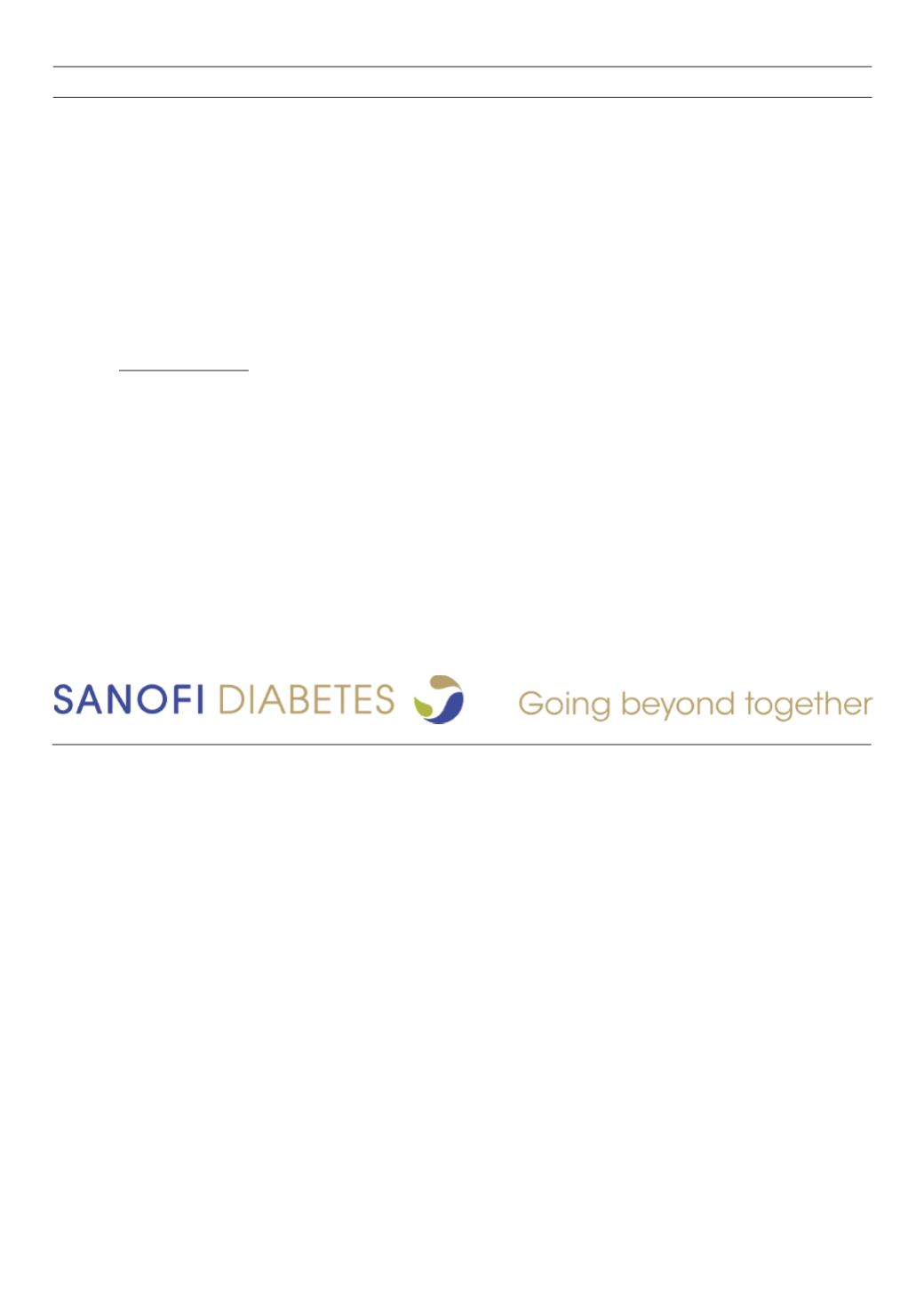
DRUG TRENDS
SA JOURNAL OF DIABETES & VASCULAR DISEASE
42
VOLUME 10 NUMBER 1 • MARCH 2013
the effects of such a diet on growth and
induction of puberty.
The American Diabetes Association
currently recommends that macronutrient
dietary portions be individualised to the
patient’s circumstances and are to be
formulated by a registered dietician. Locally,
SEMDSA recommends a diet consisting of
< 35% fat, 45 to 60% carbohydrate and 15
to 20% protein; and for weight loss, a low-
fat, low-carbohydrate or Mediterranean diet.
1.
Shai
et al
.
N Engl J Med
2008;
359
: 229≠241.
Diabetes in the elderly
Dr Stan Landau, physician, CDE, Houghton
Developing countries are bearing the lion’s
share of new-onset T2DM in the elderly. The
elderly, along with the rest of the population,
are progressively tending towards obesity.
In South Africa, 8% of the population is
represented by people over the age of 60
years, and of the population aged 65 years
and older, one in five individuals has T2DM.
Dr Landau referred to De Fronzo’s
ominous octet of pathogenic mechanisms in
T2DM and questioned which of these were
of primary consideration in the elderly. As an
example, incretin effects alter with ageing.
The elderly with T2DM have greater levels of
GLP-1 secretion that are poorly functional,
and the activity of DPP-4 is exceptionally
reduced. DPP-4 inhibition may therefore be
inappropriate in this setting.
With increased insulin resistance and
decreased insulin secretion, renal glucose
thresholds are elevated, resulting in insidious
and vague symptoms that are further com-
pounded by the presence of co-morbidities.
Data from the United Kingdom indicates that
of the elderly population with T2DM, 16%
are blind or have visual impairment and 25%
have foot ulceration. Dr Landau advised that
annual T2DM screening for people over 70
years of age is invaluable, particularly in those
who are asymptomatic.
Dr Landau continued with a number of
considerations in the treatment of T2DM in the
elderly. He raised the point that blood pressure
measurements in the elderly are more accurate
when the patient is standing. Patients should
be assessed for impaired cognitive function
and also according to the Geriatric Depression
scale. The elderly patient should be screened
for osteoporosis, have a vascular risk assess-
ment and be examined for sarcopaenia. The
frail, sick patient requires less aggressive T2DM
therapeutic intervention as long-term cardio-
vascular outcomes are not a priority.
Thiazolidinediones are to be avoided
because of the threat of bone fractures and
falls; and glibenclamide is also inappropriate
for use in the elderly. Metformin is safe
and there are a number of insulin options.
Hypoglycaemic events are common with
insulin use and this is often due to erratic
nutrition/feeding patterns. Of the DPP-4
inhibitors, vildagliptin is most appropriate in
those older than 70 years, although these
patients are more likely to encounter side
effects and severe adverse events. Data on
GLP-1 liraglutide indicate dose efficacy in
patients older than 65 years, and no contra-
indications exist at this time.
When educating the elderly patient
with diabetes, age-related factors such
as poor eyesight and hearing, cognitive
impairment, depression, limited mobility
and access to healthcare services, and self-
administration and monitoring of therapy in
arthritic patients, need to be considered. It is
important to set appropriate, individualised
targets.
Glenda Hardy


